Operating at the intersection of imported waste and local upcycling cultures, the Ghanaian designer shares his relationship with second-hand clothing and his radical approach to creativity.
The social and environmental impact of discarded clothing remains a contentious issue. On the one hand, a growing number of brands and designers have (proudly) incorporated cast-off fabrics into their collections. On the other hand, this kind of remedying has perhaps prevented the fashion industry from tackling the issue of waste in a more holistic manner. One notable exception, sensitive to the potential of a wide-ranging approach to the issue, is Ghanaian-based designer and multidisciplinary artist Selinam Kofiga Gbemu, also known as Sel Kofiga.
“Do people still have relationships with their clothes? And if so, how has that relationship evolved? Because if that kind of relationship is still present, the consumer can go on to say, ‘I don’t buy new stuff, I don’t need it.’ But if that relationship has been completely erased the only form of engagement there can be is overconsumption.” As these musings suggest, Sel Kofiga works to create sustainable relationships, rather than sustainable collections. Best known for his wearable art—hand-painted garments made of upcycled fabric—, his projects deal with the circulation, the socio-political underpinnings, and the creative potential of waste material. “I’m interested in what it is and how it ends up in my space, how it moves in my space; how it clothes my space, and how it affects the social landscape of my space,” he explains in this respect.
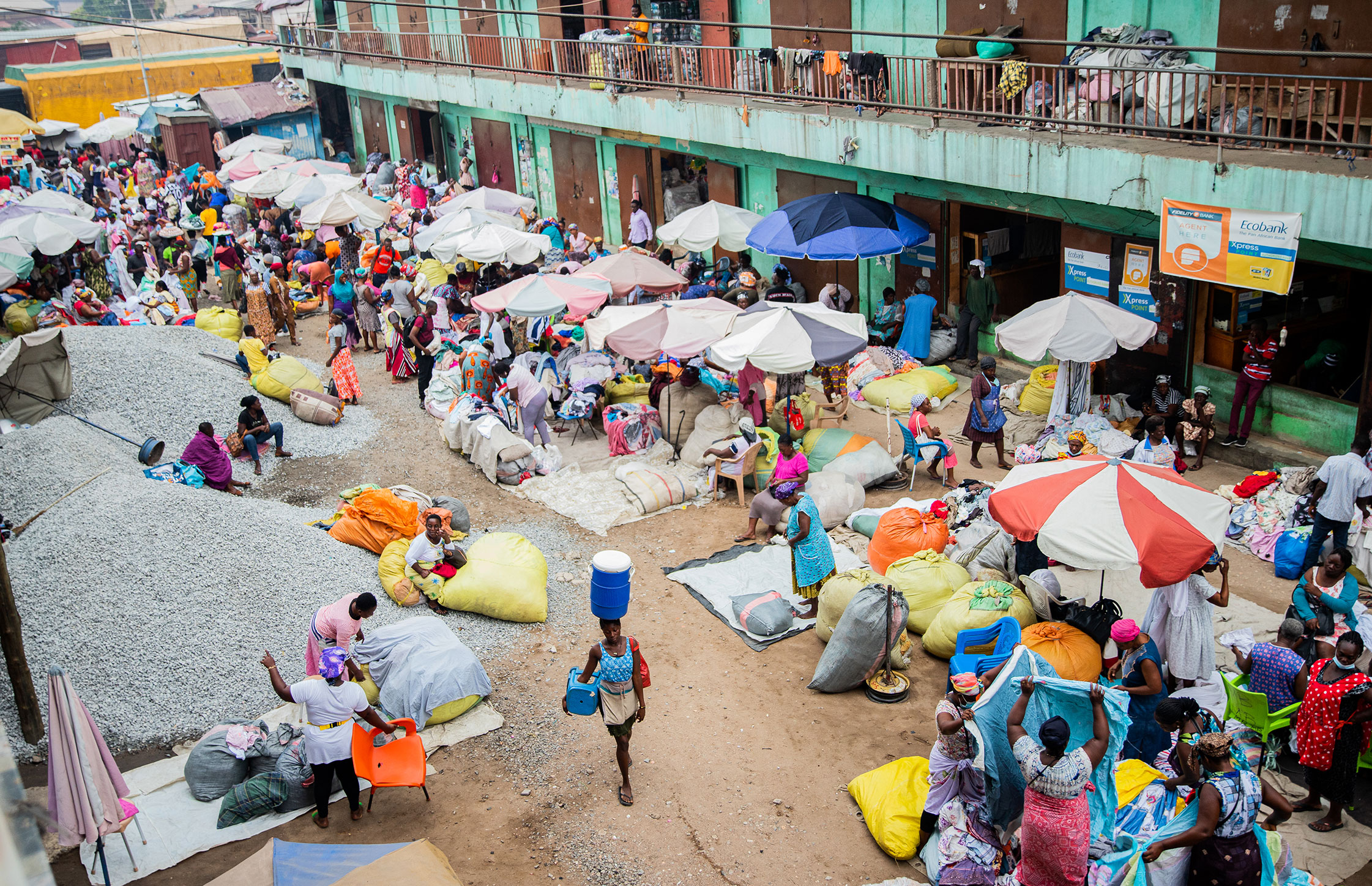
At the origin of this interest lie the environment and dynamics of Ghanian markets. From a young age, Kofiga would spend much of his time between the stands, playing and observing the surroundings. “In Ghana, the market is just a normal place. You buy everything there, my groceries, and all other necessities […] And I remember a woman that sold second-hand clothing. As kids, we would visit her and watch her spread the clothes on a mat and ring a tiny bell to draw attention […] we would try to assist her by ringing that bell.” Today, the markets of Accra, are among the largest receivers of second-hand clothing in the world, with millions of discarded garments arriving from Europe, China, and the United States daily (and many more being shipped to other countries or accumulating on nearby shores). According to recent estimates, every week, over 15 million used garments flow through Kantamanto Market alone. “These days, our markets are constantly receiving used clothes, locally known as broni wawu, but none of them were designed for this purpose. So, how did they even become second-hand markets?” The continuous flow of used clothes has significantly impacted the local landscape, culture, and livelihoods. Due to the increasingly poor quality of fast fashion, imported clothes have become harder to sell and reuse. Combined with the restless production demands of the West, among other things, this has led to changes in the market dynamic and to ever higher volumes of clothes piling up in local landfills, with dire consequences for the ecosystem. “The design of these markets isn’t very modern, and there is little space for things to actually move through. So we have people carrying these heavy bales of second-hand clothes on their heads,” says Kofiga in an effort to describe the situation.

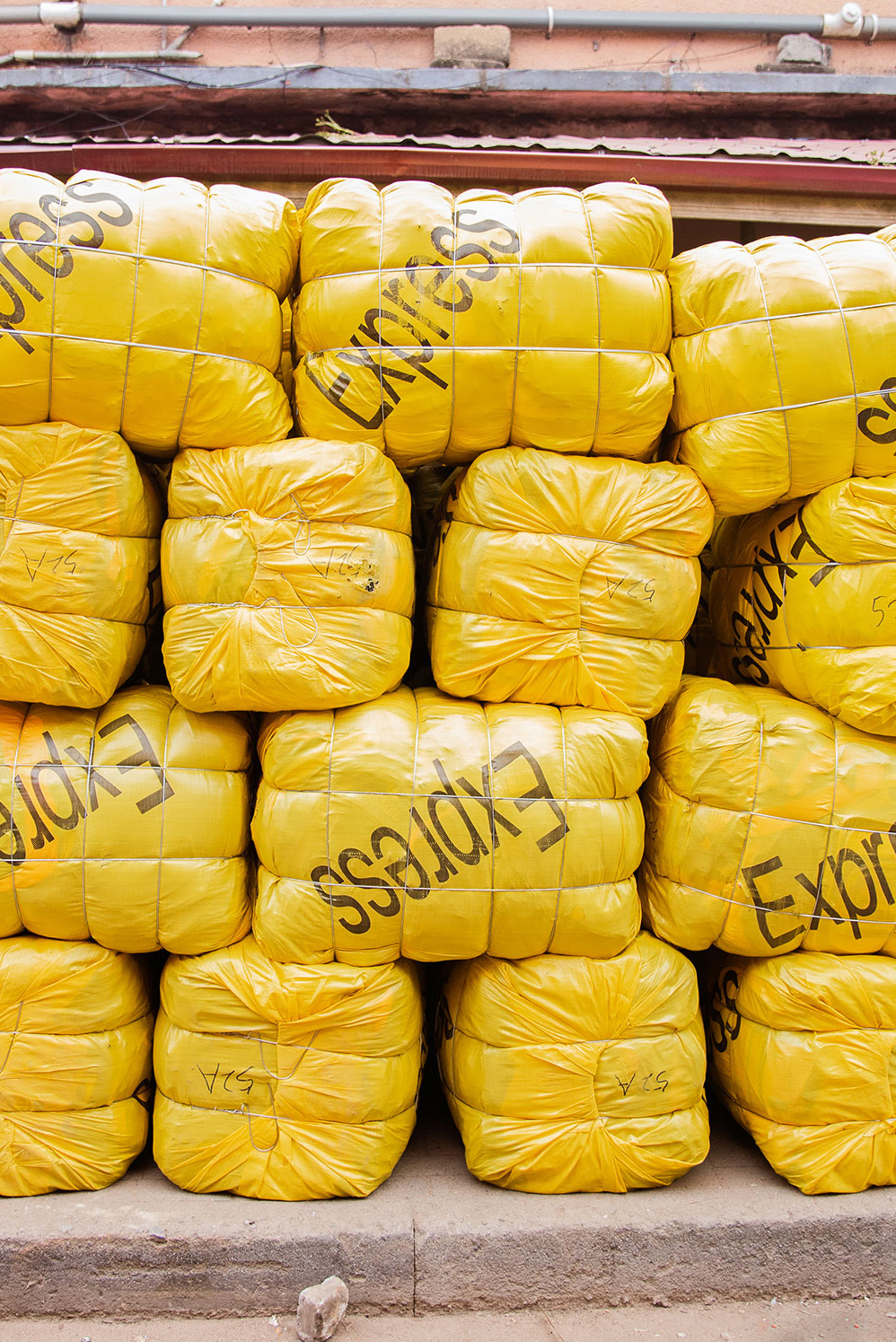
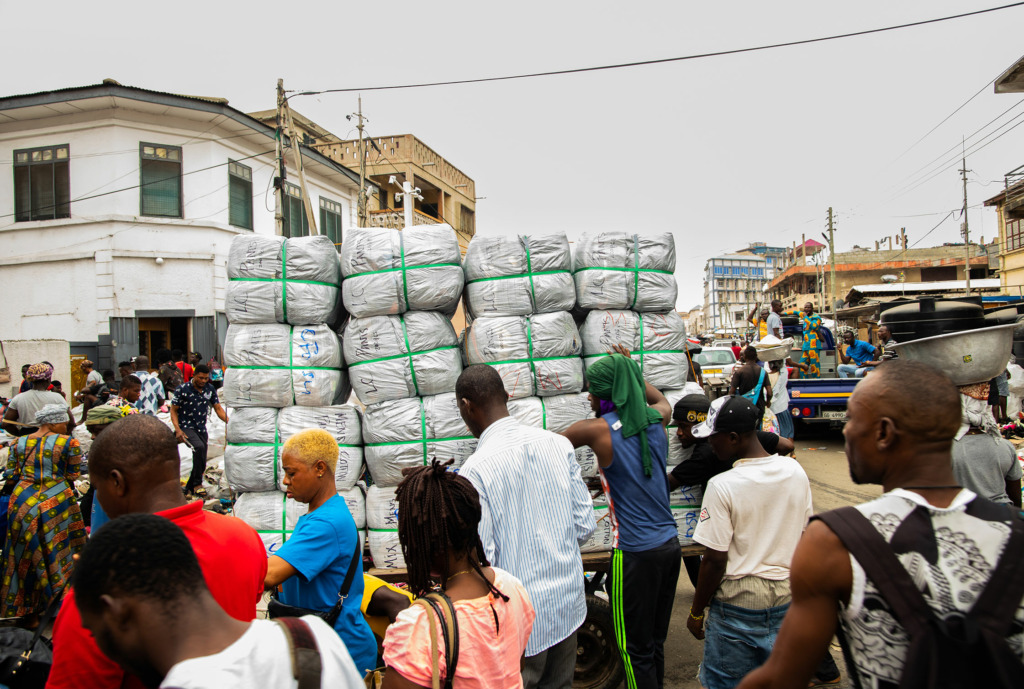
“These days, our markets are constantly receiving used clothes, locally known as broni wawu, but none of them were designed for this purpose. So, how did they even become second-hand markets?“
To unpack the complex transformations brought on by the secondhand trade, in 2019 Kofiga founded The Slum Studio, a self-defined research brand creating hand-painted textiles and one-of-a-kind upcycled garments—buttoned shirts and loose trousers, covered in symbols, writing, and radiant strokes of color. While The Slum Studio’s creations are nothing short of stunning, the brand’s purpose is to document the context and create a certain awareness, rather than to please. “At the time I started, I was doing a photo documentary series capturing the lives of the people who carry these bales and I spent quite some time talking to them and photographing them, and so I became interested in how their lives are tied to this material,” Kofiga recalls.

It was this immersive experience that first inspired Kofiga’s practice and creative process—a material investigation of waste and radical reframing of upcycling as both a creative and a political act. “I start by walking through all these markets and engaging with the people who are working there. The people importing and selling these materials, the people upcycling the materials, recycling the materials, and carrying the materials. I’m interested in their stories and what made them become part of this whole circularity,” Kofiga explains with regards to the initial stages of any of his projects, and continues to illustrate, “I’m talking to people and I’m also looking at the way color is used to present clothing in the marketplace.” Notes, photographs, and videos are key to securing testimonies along with personal impressions. During this stage, Kofiga also sources the fabrics onto which he will later transfer his findings. “For me, using the materials I’m talking about is very symbolic, as it connects back to the same space, and it represents the story that I’m going to tell.” Preferred textiles include heavy cotton and hemp in off-white, khaki, and other light shades. Back at Kofiga’s Studio, in the neighborhood of Frafraha, the collected fabrics, often old curtains and sheets are washed and hung up to dry. Once they have dried, the data collected at the market is painted on the textile canvas in the form of abstract patterns and shapes that form fascinating synergies. After the desired effect is achieved, the textiles are cut and sewn into garments with loose-fitted silhouettes that can be purchased in selected stores across Ghana, Japan, the United States, Spain, and the Ivory Coast or viewed in galleries and museums—currently ‘Follow the River, Follow the Thread’ at Open Eye Gallery in Liverpool and ‘It’s our F***ing Backyard’ at Stedelijk Museum in Amsterdam.
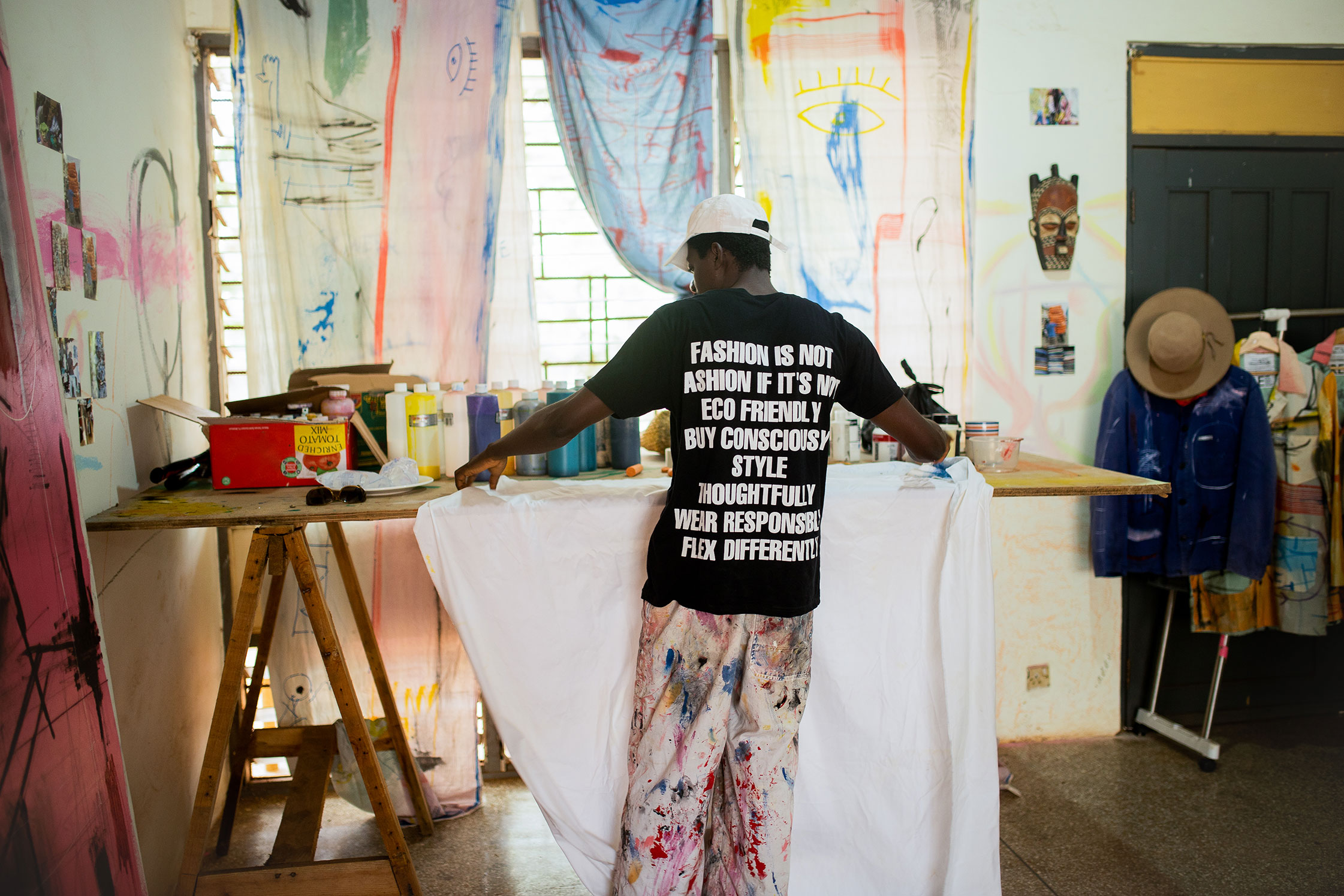
“All these local cultures inspire me a lot because they have a very imaginative way of giving new life to all these worn-out clothes.”
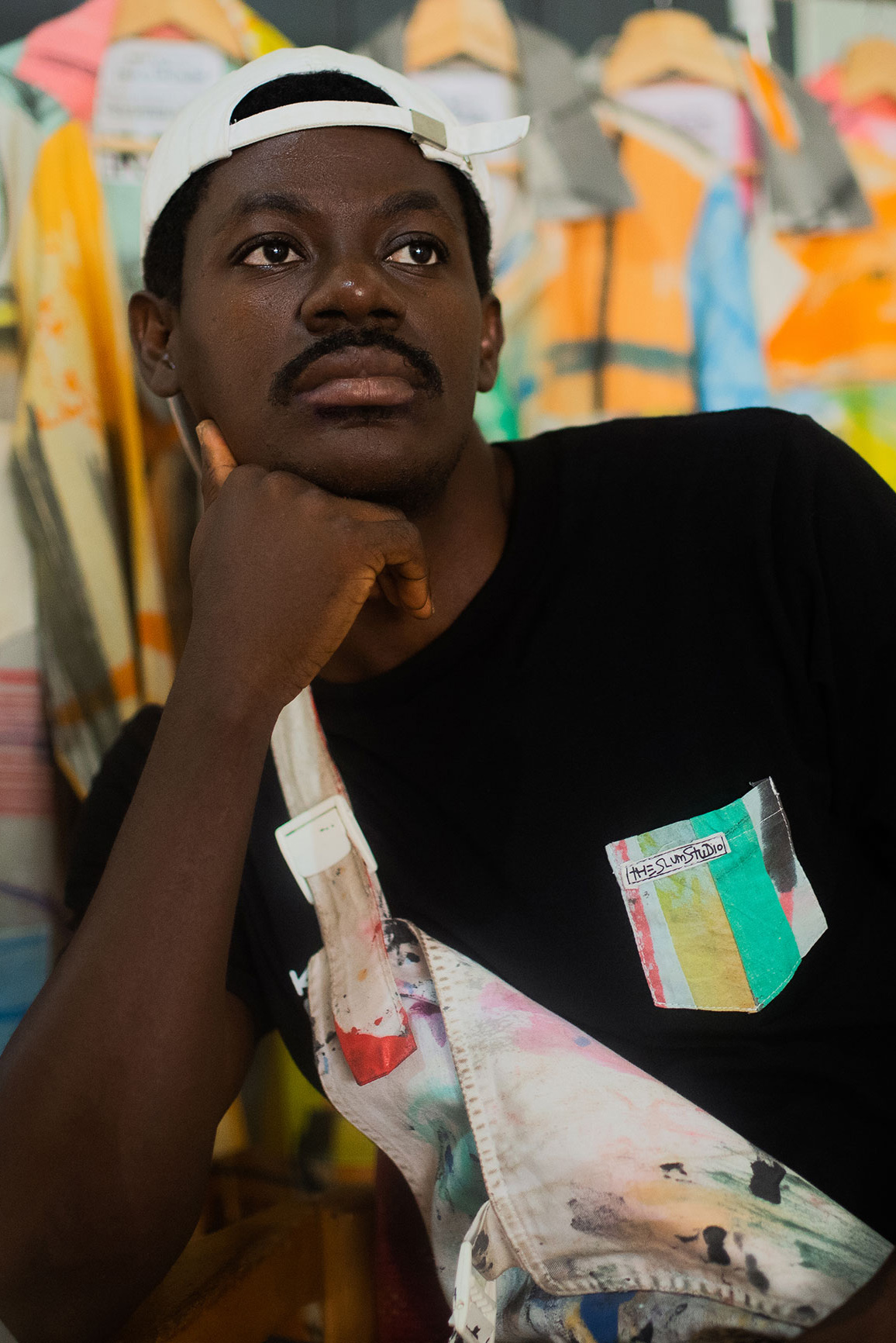
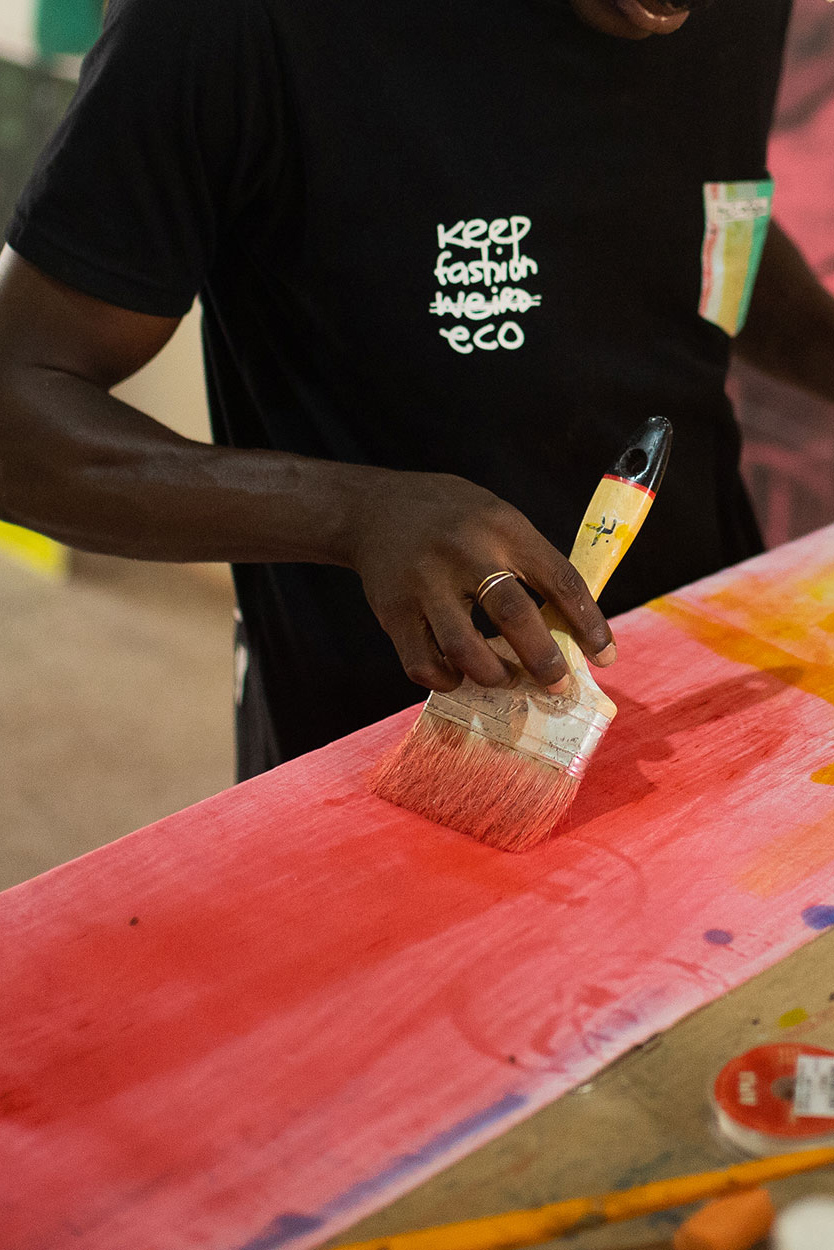
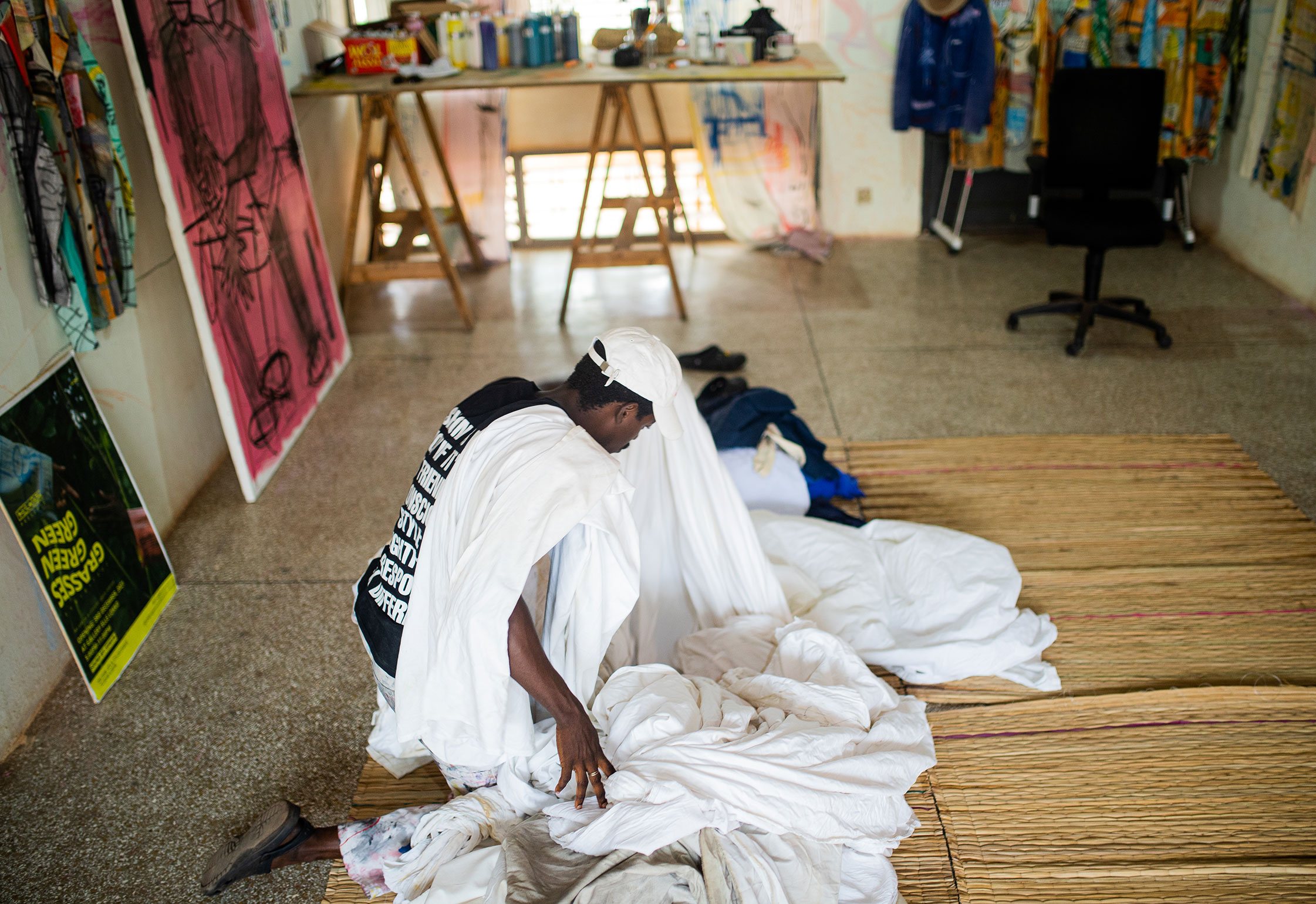

Further converging on Kofiga’s creations are the myriad ways in which clothes are cared for, repaired, and repurposed across local Ghanian cultures and communities. “All these cultures inspire me a lot because they have a very imaginative way of giving new life to all these worn-out clothes.” The same cultures are deeply committed to looking after what’s already there. Referencing the Fugu, a traditional garment made of handwoven Dagawɛdzɛ fabric, Kofiga goes on to explain that garments of this sort can stay in families for over thirty years. There is memory, there is attachment, and there is an intergenerational bond that keeps flourishing. “You grow up wearing your brother’s clothes, wearing your siblings’ clothes, your dad’s clothes, and all that kind of stuff. And when it becomes worn out, we fold it and put it in a trunk until Adeɛyei (an Akan word for alteration man/woman) comes to see and repair it.” It is this kind of attachment that Kofiga hopes to inspire in his wearers. “I want to give the consumer a new way of thinking about waste material. […] If you are wearing a piece of art and the only option you have is to take care of it.”
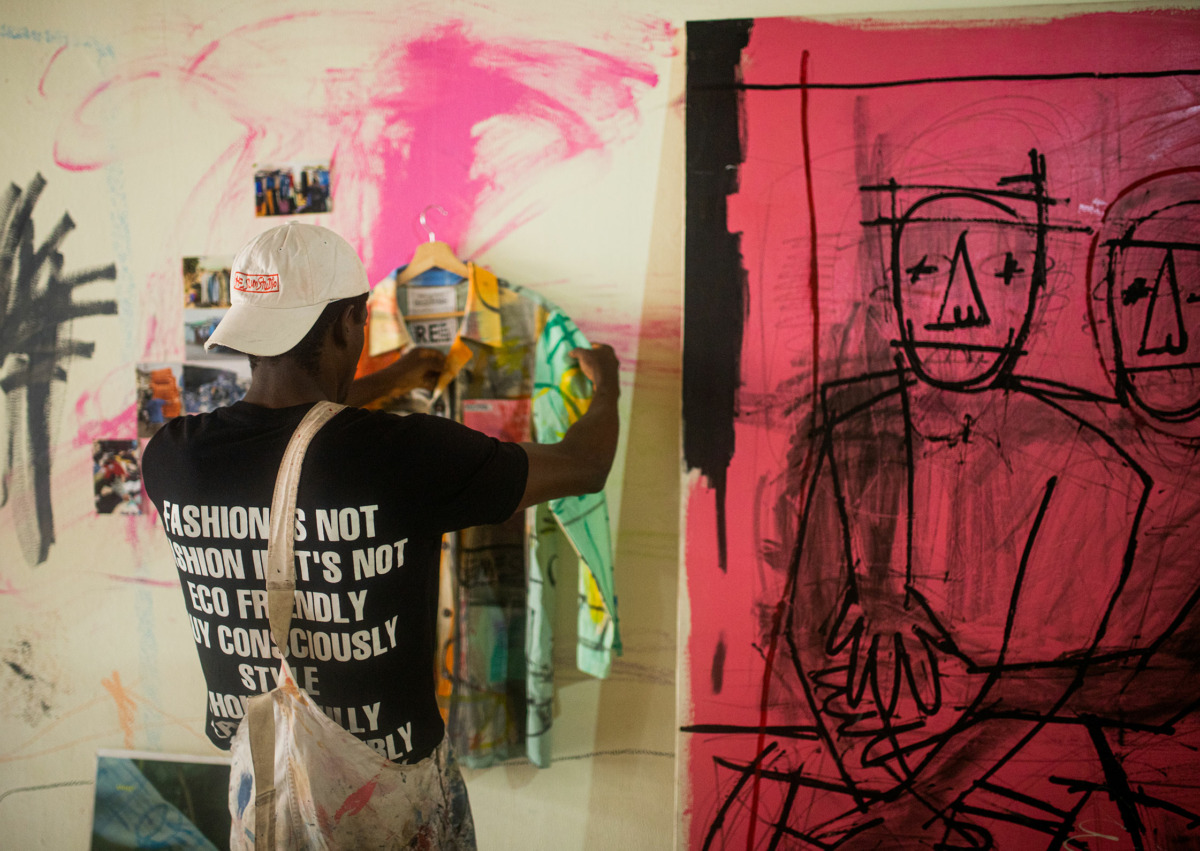
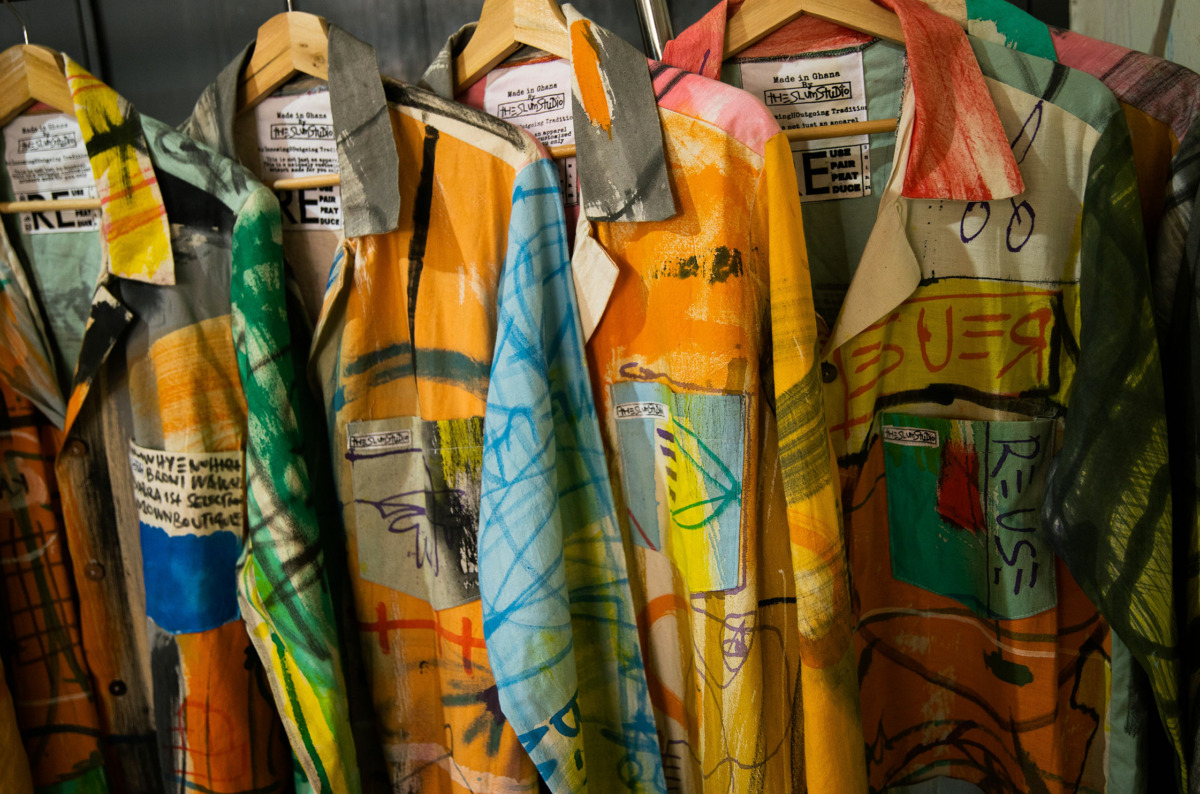
Overall, Kofiga’s approach is slow, critical, and joyful. Every detail of the final pieces reflects the process and the context that produced it, every element contains an instance of Kofiga’s relationship with second-handedness—from the fabric, with its grim history and movement in space, to the lively interplay of patterns that whisks the viewer and the wearer away to the bustling beauty of the market, the stories of those who animate it, and Kofiga’s own childhood memories. But Kofiga gives us more than a blueprint for re-imagining our relationship with clothes and waste. By approaching his collections as qualitative inquiries, he invites us to reconsider design and creativity as tools for learning and knowing, rather than means of producing. This is perhaps why, when asked about the future he leaves us with a hopeful message: “Going to the market, buying used curtains, and turning them into something new. If we can preserve this kind of practice, we can [use it to] understand our collective past and imagine a different future.”
Selinam Kofiga Gbemu, is a self-taught multidisciplinary artist and the founder of The Slum Studio, a Ghanaian research brand creating hand-painted textile and wearable art made out of fabric waste.
This piece is part of our New Futures series, where we explore how creativity is used to imagine alternative futures and build new realities and ways of living.
Interview and text: Amelie Varzi
Photography: Fiifi Abban

